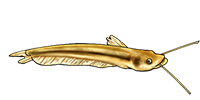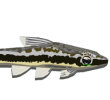http://imgur.com/a/CDQJT
Are these in fact L015?
-
dicten
- Posts: 8
- Joined: 24 Nov 2016, 09:34
- My cats species list: 5 (i:3, k:0)
- My aquaria list: 1 (i:0)
- Spotted: 1
- Location 1: Oslo
- Location 2: Norway
Are these in fact L015?
They were sold to me as L015, but after looking around, i think that they do not look like it 
http://imgur.com/a/CDQJT
http://imgur.com/a/CDQJT
- Acanthicus
- Posts: 870
- Joined: 24 Jan 2011, 14:32
- My articles: 5
- My images: 92
- My cats species list: 29 (i:0, k:0)
- Spotted: 80
- Location 1: Kiel
- Location 2: Germany
- Contact:
Re: Are these in fact L015?
Hi,
thats not even a Peckoltia, but a Hypancistrus. I have some L 333 that look alike, not saying it is L 333.
thats not even a Peckoltia, but a Hypancistrus. I have some L 333 that look alike, not saying it is L 333.
Daniel
-
dicten
- Posts: 8
- Joined: 24 Nov 2016, 09:34
- My cats species list: 5 (i:3, k:0)
- My aquaria list: 1 (i:0)
- Spotted: 1
- Location 1: Oslo
- Location 2: Norway
Re: Are these in fact L015?
Well, shit.
Well, I dont think its L333 tho, as mine are much darker.
Well, I dont think its L333 tho, as mine are much darker.
- stuby
- Posts: 532
- Joined: 14 Jul 2009, 03:52
- I've donated: $25.00!
- My images: 1
- My cats species list: 1 (i:1, k:0)
- My aquaria list: 1 (i:0)
- Spotted: 1
- Location 1: USA
- Location 2: Big Rapids, MI.
Re: Are these in fact L015?
I agree, it definitely appears to be a Hypancistrus. Possible L129 and a bunch of others out there..... better pictures would help with a ID and if possible at least where (country at least) they came from.
Chuck
Chuck
-
dicten
- Posts: 8
- Joined: 24 Nov 2016, 09:34
- My cats species list: 5 (i:3, k:0)
- My aquaria list: 1 (i:0)
- Spotted: 1
- Location 1: Oslo
- Location 2: Norway
Re: Are these in fact L015?
Yeah, sorry, hard to get pictures of the little buggers... Heres a few more:
http://imgur.com/a/HCSJW
Guess i'll have to take em out if i want better photos
http://imgur.com/a/HCSJW
Guess i'll have to take em out if i want better photos
- stuby
- Posts: 532
- Joined: 14 Jul 2009, 03:52
- I've donated: $25.00!
- My images: 1
- My cats species list: 1 (i:1, k:0)
- My aquaria list: 1 (i:0)
- Spotted: 1
- Location 1: USA
- Location 2: Big Rapids, MI.
Re: Are these in fact L015?
They still look a lot like L129's to me..... but there are a few that look similar to this also. If, for example they where imported from Brazil that would tell us they aren't L129's...... L129's are from Colombia. So knowing where they came from would help ID them. They appear to have what a friend of mine called "glasses"..... L129's have a line that goes from one eye to the other that kind of looks like he has glasses on.
HTH
Chuck
HTH
Chuck
-
dicten
- Posts: 8
- Joined: 24 Nov 2016, 09:34
- My cats species list: 5 (i:3, k:0)
- My aquaria list: 1 (i:0)
- Spotted: 1
- Location 1: Oslo
- Location 2: Norway
Re: Are these in fact L015?
Yeah, I'm heading back to the store tomorrow to ask them a few harsh questions. I might ask to return them...
-
dicten
- Posts: 8
- Joined: 24 Nov 2016, 09:34
- My cats species list: 5 (i:3, k:0)
- My aquaria list: 1 (i:0)
- Spotted: 1
- Location 1: Oslo
- Location 2: Norway
Re: Are these in fact L015?
Store says they took in some L066, and that they are most likely that... If they are not, then they have no idea... Le sigh. Someone on another forum also suggested L173b, but as they are quite rare in europe, im thinking probably not? I would guess they are a common type, as the store took in quite a few, but maybe under a different type number. Someone dont know what they are doing....
- stuby
- Posts: 532
- Joined: 14 Jul 2009, 03:52
- I've donated: $25.00!
- My images: 1
- My cats species list: 1 (i:1, k:0)
- My aquaria list: 1 (i:0)
- Spotted: 1
- Location 1: USA
- Location 2: Big Rapids, MI.
Re: Are these in fact L015?
I should have asked this before....... how big are they?? Some smaller plecs look alike and are easier to ID when they are a little bigger.
If you like them and you are happy with what you paid for them that is really all that should matter...... not a number that was assigned to them. Some of my favorite plecs I got where miss ID'ed. I bought some that where labeled L129's that turned out to be L340's, L15's that where Peckoltia sp. "Zwerg", and some "unknown" plecs that where Peckoltia sp. Rio Tocantins...... and a few others.
Chuck
If you like them and you are happy with what you paid for them that is really all that should matter...... not a number that was assigned to them. Some of my favorite plecs I got where miss ID'ed. I bought some that where labeled L129's that turned out to be L340's, L15's that where Peckoltia sp. "Zwerg", and some "unknown" plecs that where Peckoltia sp. Rio Tocantins...... and a few others.
Chuck
-
dicten
- Posts: 8
- Joined: 24 Nov 2016, 09:34
- My cats species list: 5 (i:3, k:0)
- My aquaria list: 1 (i:0)
- Spotted: 1
- Location 1: Oslo
- Location 2: Norway
Re: Are these in fact L015?
They are quite small still, i´m guessing about two inches, tops. So yeah, they will be mysteryplecos until they get bigger! Yeah, I´m happy with them, I just wanted to read up on them to provide a good habitat and to see how big they will get, etc.
- Acanthicus
- Posts: 870
- Joined: 24 Jan 2011, 14:32
- My articles: 5
- My images: 92
- My cats species list: 29 (i:0, k:0)
- Spotted: 80
- Location 1: Kiel
- Location 2: Germany
- Contact:
Re: Are these in fact L015?
Hi,
pretty sure its not a H. debilittera or one of the complex around this species. It seems to be from the Xingu-complex - the wormlined ones. L 173b sometimes look like the specimens in question, sometimes they dont, so does L 333.
pretty sure its not a H. debilittera or one of the complex around this species. It seems to be from the Xingu-complex - the wormlined ones. L 173b sometimes look like the specimens in question, sometimes they dont, so does L 333.
Daniel
-
dicten
- Posts: 8
- Joined: 24 Nov 2016, 09:34
- My cats species list: 5 (i:3, k:0)
- My aquaria list: 1 (i:0)
- Spotted: 1
- Location 1: Oslo
- Location 2: Norway
Re: Are these in fact L015?
Took some more photos of them, if it helps...
http://imgur.com/a/ZjTbk
http://imgur.com/a/ZjTbk
- stuby
- Posts: 532
- Joined: 14 Jul 2009, 03:52
- I've donated: $25.00!
- My images: 1
- My cats species list: 1 (i:1, k:0)
- My aquaria list: 1 (i:0)
- Spotted: 1
- Location 1: USA
- Location 2: Big Rapids, MI.
Re: Are these in fact L015?
Acanthicus may very well be correct..... looking at the new pictures they do not look L129 like except the last one.
Chuck
Chuck




